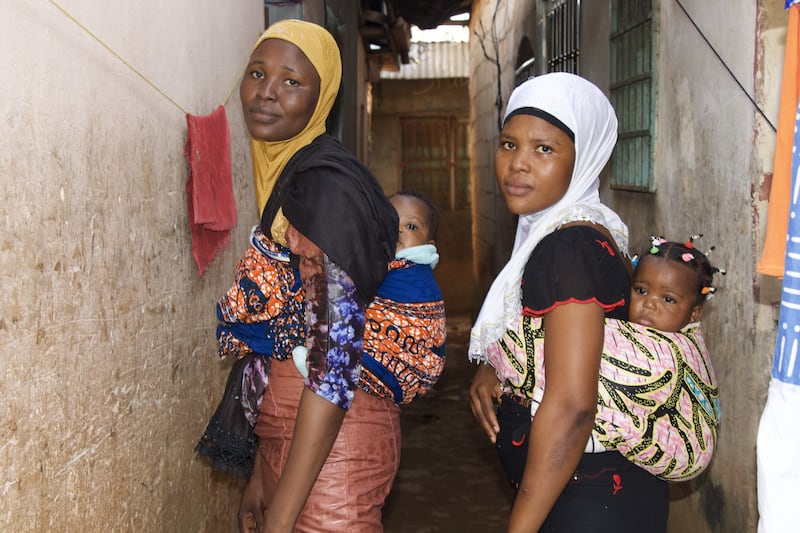Plummeting fertility rates mean the populations of more than three quarters of the world’s countries could shrink by 2050, posing multiple threats to health, the environment and economies, according to a new study.
By 2050, 155 of 204 countries and territories will fall below the population replacement rate, known as the total fertility rate, of 2.1 children per woman.
And by 2100, when more than half of live births are expected to occur in sub-Saharan Africa, just six out of 204 countries and territories will have fertility rates capable of sustaining their populations.
The authors of the study, published in The Lancet, warned the world is approaching a “low-fertility future”, with differing fertility rates set to create a “demographically divided world”.
In 2021, 29 per cent of the world’s babies were born in sub-Saharan Africa – a percentage predicted to rise to 54 per cent by 2100.
Natalia V Bhattacharjee, co-lead author and lead research scientist in the Institute for Health Metrics and Evaluation at the University of Washington’s school of medicine, said the implications of the change were “immense”.
“These future trends in fertility rates and live births will completely reconfigure the global economy and the international balance of power and will necessitate reorganising societies,” she said.
“Global recognition of the challenges around migration and global aid networks are going to be all the more critical when there is fierce competition for migrants to sustain economic growth and as sub-Saharan Africa’s baby boom continues apace.”
By 2050, Kuwait is predicted to have one of the lowest fertility rates in the world, at just 1.07 births per woman. The lowest fertility rate overall is predicted to be South Korea, at just 0.82 children per woman.
Niger is expected to have the highest, at 5.15. Afghanistan, the only other country in the Middle East and North Africa predicted to be among the world’s top 10 most fertile, is expected to have a fertility rate of 3.34.
By 2100, 13 countries, including Saudi Arabia, are predicted to have fertility rates that fall below one. Bhutan is predicted to have the lowest overall fertility rate at 0.69.
The highest is tipped to be Samoa, with a fertility rate of 2.57. Israel and Egypt will also have among the world’s top 10 highest rates, at 2.09 and 2.05 births, respectively.
The global total fertility rate has more than halved over the past 70 years, from about five in 1950 to 2.2 in 2021.
But the rate varies, depending on the country and region.
In some countries it is much less, such as South Korea and Serbia, where the rate is less than 1.1. However, in sub-Saharan Africa, it is nearly twice the global average of four in 2021.
According to a study released in 2020, the UAE has one of the lowest fertility rates in the world, with high living costs and a growing focus on building careers over starting families contributing to a decades-long decline.
The new research shows that Chad has the world’s highest rate, at seven births per woman. Global fertility is predicted to fall further in the coming decades, reaching 1.8 in 2050 and 1.6 in 2100, which is well below the replacement level.
“In many ways, tumbling fertility rates are a success story, reflecting not only better, easily available contraception but also many women choosing to delay or have fewer children, as well as more opportunities for education and employment,” said senior author Prof Stein Vollset from the Institute for Health Metrics and Evaluation.
Nevertheless, the declines mean the world is facing “staggering social change through the 21st century”, simultaneously tackling a “baby boom” in some countries and a “baby bust” in others, he said.
World population hits 8 billion – in pictures
“As most of the world contends with the serious challenges to the economic growth of a shrinking workforce and how to care for and pay for ageing populations, many of the most resource-limited countries in sub-Saharan Africa will be grappling with how to support the youngest, fastest-growing population on the planet in some of the most politically and economically unstable, heat-stressed and health system-strained places on Earth,” added Prof Vollset.
Obesity, poor diet, exposure to harmful environmental toxins and overuse of medications are thought to have all contributed to a rapid decline in sperm rates since the 1970s.
Normal sperm count ranges from 15 million to 200 million sperm per millilitre of semen, with the global average dropping from about 104 million in 1973 to 49 million in 2019.
Research published by the University of Jerusalem's Hadassah Braun School of Public Health found the rate of decline accelerated in the 21st century.
























